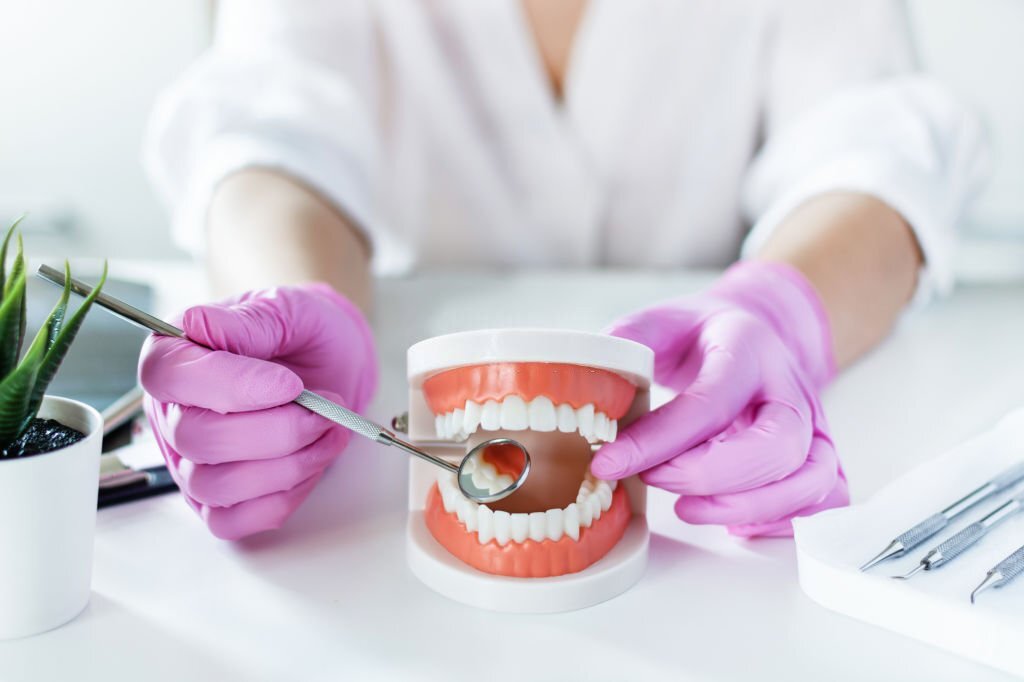Smiling confidently is the ultimate goal of people with dental issues like discoloration or missing teeth. Not only do missing teeth have aesthetic consequences, but they can also significantly impact your teeth’s function. It causes uneven bite, which eventually results in tooth loss and decay.
Partial dentures are dental tools used to replace lost or missing teeth. It’s a highly recommended and cost-effective option for patients that have a few teeth left but one or couple of them are lost. Dentures are available for both the upper and lower jaw, and they come in two main types—permanent and removable upper partial dentures.
Partial dentures work like regular dentures, except they are attached to the partially intact tooth. It’s the best solution for patients that have lost a portion of their tooth in an accident or a trauma and are left with a partially intact and partially missing tooth. Here’s all you should know about permanent partial dentures.
What are Permanent Partial Dentures?
Dentures are aesthetic dental appliances consisting of one or multiple false teeth. They have a metal base, which is custom-made to match the color of your gum. Now, these dentures can be permanent or temporary, depending on your requirements and the number of teeth missing in your mouth.
Temporary dentures are removable; you can take them out for cleaning and other purposes and put them back in. Discuss your requirements with a specialist at Taylor dental clinic to know the most suitable option. They will evaluate the condition of your oral health to suggest the most reliable option.
Dentures are also useful in cases where multiple teeth are missing, and each one is from a different area of the mouth. In such cases, the partial dentures are tailored to your specific needs and are designed to clasp onto the natural teeth to fill in the gaps. That way, all your missing teeth are replaced with these false teeth that blend well with your mouth and look natural.
Let’s explore the three common varieties of permanent partial dentures.
Types of Partial Dentures
You can choose from three types of dentures, each known for its specific use. Discuss your goals and budget with a dentist to find the best option. Your choice will also depend on where the replacement should occur.
Tooth Flipper
These are for temporary use. Tooth flippers are removable dentures that are designed for a short period until permanent dentures are made. These help patients get familiar with partial permanent dentures, so they don’t feel weird when the permanent ones are set in place. Having tooth flippers also supports gum healing and avoids a bone loss.
Cast Metal
Cast metal dentures are the ones we discussed above. They rest on the metal framework, which is colored pink, matching your gum, so they feel and look natural. They are attached to your natural teeth using metal clasps. These are, so far, the most affordable and effective options on the list. Not just because they are aesthetically appealing and barely look like the false teeth, but cast metal partial dentures last long and are strong enough to stay intact.
Flexible Dentures
If you are concerned about getting used to wearing permanent partial dentures, flexible dentures are your best bet. They are lightweight, incredibly flexible, and feel natural in your mouth. They are made according to the patient’s unique gum anatomy but require no teeth adjustment.
One of the biggest advantages of permanent partial dentures is that they can’t be removed. On the other hand, dentists usually advise patients to take removable dentures out before going to bed. These involve extra cautiousness as you might damage the dentures in sleep or while chewing hard foods. While it may take some time to get used to the permanent dentures, they feel comfortable once inserted.
Procedure to Get Permanent Partial Dentures
Dentures are not placed in your first appointment. Your dentist will first conduct a comprehensive oral health exam to identify any dental issues before fabricating dentures. If they find cavities, periodontal disease, or gum issues, they will ask you to get treatment before getting dentures in Texas. They will also evaluate the area of the mouth where dentures need to be attached.
The next step involves a minor surgery performed under local anesthesia, where the root tip, bone, or any part of the existing tooth is extracted. Your dentist will schedule an appointment to take your mouth impression after the gum has healed from the tooth extraction.
Since partial dentures are custom-made, the dentist will take several impressions and check your bite multiple times to ensure that they have got a perfect image. This ensures that the dentures fit your mouth and feel comfortable.


